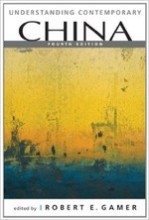The Historical Context - Political Patterns of the Past
37 important questions on The Historical Context - Political Patterns of the Past
What was the first dynasty of China?
Why did the feudal system adopted by the Zhou become hard to maintain?
Under the Qin philosophical schools adopted doctrines called Legalism. What did they emphasize?
- Higher grades + faster learning
- Never study anything twice
- 100% sure, 100% understanding
Which measures did the Qin take to ensure conformity within the new empire?
- The idea of the oldest son inheriting all of his father's property and status was abolished (since this could lead to a power that might threaten the state)
- Land was now privately owned and freely bought and sold
- Walls were rebuilt to discourage raids; these have become known as the Great Wall.
- Forced labor was levied as part of taxes, so that the Great Wall and imperial roads and canals could be built
- Intellectuals who questioned the state were suppressed
Despite the fact that the Qin laid the foundation for following dynasties and modern China, they were already toppled in 15 years. How was this possible?
Who became the new ruler of China in 202 BCE?
How could you describe the Han ruling?
Which period was called the Six Dynasties?
What was the most destructive impact of the increasing population in the south?
Which reasons were provided to justify the deforestation?
Why was the Grand Canal built?
In what ways was the south advantaged in comparison to the north?
- In the south most places could easily be reached by cheap water transport, while in the north most streams were not navigable, and goods had to be transported by pack animal, cart and human porters at greater cost.
- The south benefited from overseas trade
- In the north there was little irrigated and cultivated land because of the consequences of deforestation (which made them dependent on the south for food). Due to the wetter and warmer climate, forest could more easily reestablish itself after deforestation in the south.
How can the cultural differences between the Cantonese/Fujianese and main body Chinese be explained?
Describe the period of the Sui dynasty.
Why is the Tang dynasty considered the high point of Chinese history?
- They presided over even a greater empire than the Han
- Elite culture flourished and poetry achieved new richness (Li Bai and Du Fu are still thought to be China's greatest poets).
- The best-known aspect of their art are the (mass-produced) glazed porcelain figures and paintings of their horses.
- The Tang capital (located in the Wei valley where the first capital of the Han used to be located) was a highly cosmopolitan place which attracted merchants and travelers from as far as the eastern Roman Empire and from most of Asia.
- The southern development continued and trade flourished
The Song dynasty has been criticized for giving up part of the Chinese empire. Why was this a wise move according to the author?
Why was the re-created civil service system an important reason for the success of the Song?
What was one of the biggest mistakes of the Song?
How did the siege of Kaifeng by the nomads eventually lead to flourishing of the Song dynasty?
Name three other examples of the success of the Southern Song, besides its great ports.
- Technological innovations in agriculture, manufacturing and transport
- Further development of mathematics (algebra and the use of zero)
- Resurgence of philosophical and religious thinking
- Government and private schools multiplied; both sons of the rich and able sons of the less well-to-do were educated.
Why were the Song eventually overrun by the Mongols?
- The Mongols were formidable fighters
- Because the Song had made an alliance with the Mongols in 1222 > within two years the Song reoccupied Kaifeing > a year later they were defending their gains.
- The Song were weakened by factionalism at court, divided counsels and inconsistent and faulty strategies.
When did the Mongol triumph in China?
Describe the period of Mongol rule
Why did Mongol rule in China last for less than a century?
Why did the Ming decide to move their capital from Nanjing to Beijing, eventhough Nanjing was in the growing southern heart of the country and Bejing in the north?
What is meant by the dynastic cycle?
What was characteristic of new dynasties?
When was the Ming dynasty officially founded?
The expeditionary voyages were the most spectecular of the first century of Ming-ruling. Why were these expeditions mainly undertaken?
Despite the fact that seamanship like that of the Chinese were unequaled by others, it made little impression on the Chinese themselves. Why was that?
What factors played a role in the decision to stop the sea expeditions in 1433?
- The expeditions were expensive, and it seemed unlikely that trade profits would cover the costs.
- The emperor may also have felt that he had made his imperial point by then.
- The capital was moved from Nanjing to Beijing in 1421 (to command the troubled northern frontier).
Which factors led to the collapse of the Ming dynasty by the end of the 16th century?
- Decline in administrative efficiency; made worse by a succession of weak emperors and the rise of palace eunuchs to power.
- As a result, banditry and rebellion increased and poorer areas suffered distress. Famine spread.
- In addition, the increasing population was not accompanied by an increase in officials, who became overworked and less effective and prone to bribery.
Who established a dynasty after the Ming?
Why were the Qing more succesful in controlling China than the Mongol?
Although the foreign traders hurt the Chinese pride by winning the wars, they also helped China in several ways. How did they do that?
When did the Qing dynasty topple?
What was the role of Honk Kong in the period after China's inauguration as a republic?
The question on the page originate from the summary of the following study material:
- A unique study and practice tool
- Never study anything twice again
- Get the grades you hope for
- 100% sure, 100% understanding































